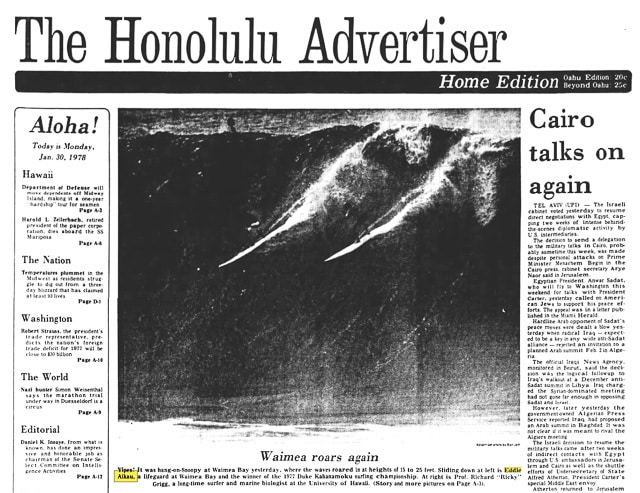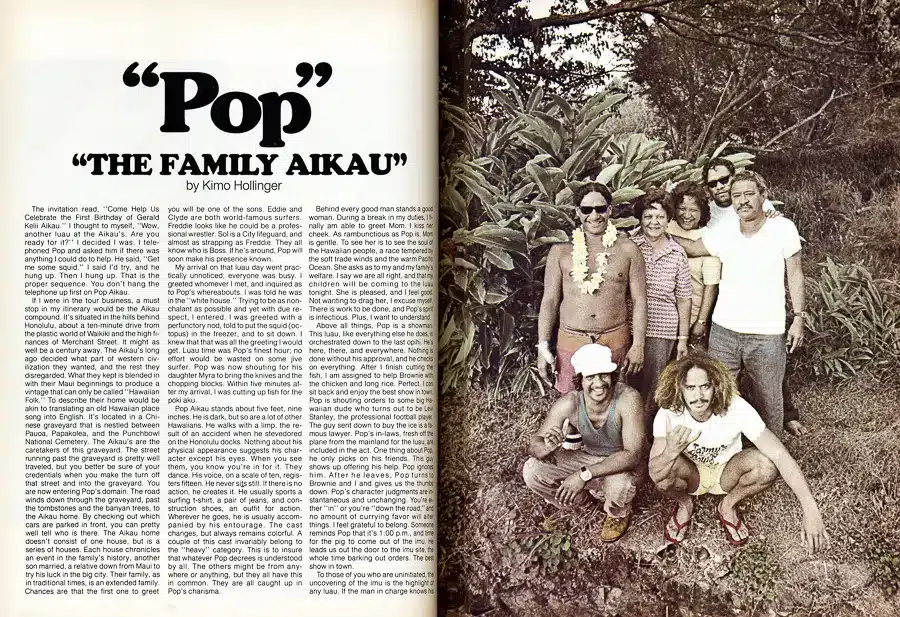So why, then, does Ombe Surf give our reporter a "tingling and goosebumps sensation?"
So there’s this online surf school. Ombe Surf. You may have seen it on YouTube, or in your Facebook ads. It’s one in a sea of many. Maybe you’ve signed up to it yourself.
Ombe’s a slick operation. Fronted by former South African pro Clayton Neinaber and his side-kick Anthony Laye. Based somewhere out of the Gold Coast, Australia.
Clayton is thin faced, wiry framed. His bookish spectacles, soft voice and reserved countenance give the impression of an accountant or government mandarin. But this belies his informed experience as a WQS surfer, shaper, and high-profile surf coach.

Anthony, meanwhile, is the embodiment of the modern-day VAL. Tanned, handsome, barrel chested. Deep booming voice. Polished English accent. He’s articulate and endearing. As a relatively recent arrival to surfing, he’s the perfect foil to his South African counterpart, asking those dumb questions and interpreting Clayton’s sage advice so it can be easily consumed by the layperson.
Each week or thereabouts the pair break down famous surfers and their techniques on the Ombe YouTube channel. Ethan Ewing. Torren Martyn. Morgan Cibilic. Devon Howard.
Ostensibly the videos are prepared by the Ombe team as a free online resource for aspiring beginner and intermediate surfers to improve their technique. The tutorials are one of many digital assets they offer up front. There’s podcasts, live feeds etc.
The ultimate goal, beyond developing the capability and proficiency of the broader surfing public – the rising tide that lifts all boats – is to entice viewers behind the paywall.
Here you can access, as is my understanding:
* more detailed training
* bespoke feedback
* rigorous training courses etc.
All well and good. And, judging by their professional studio, customised merch and highly engaged social media platforms, it is a successful business model
I don’t mean for this to be an ad for Ombe. Online surf schools are a dime a dozen. I think the rapid digitisation and monetisation of surf tutorials is a blight on the sport.
But I derive a different pleasure from Ombe. One that I am sure was entirely unintended. Yet it is now equally as powerful for the Ombe team, in that it is spurring me to write about their offerings on the world’s second biggest* little surf website.
You see, I enjoy these online surf tutorial videos on an ASMR level.
“ASMR stands for autonomous sensory meridian response; a term used to describe a tingling, static-like, or goosebumps sensation in response to specific triggering audio or visual stimuli. These sensations are said to spread across the skull or down the back of the neck and, for some, down the spine or limbs”
People have all types of kinks when it comes to ASMR. Whispering. Touching. The wet sopping of lips sinking into a fresh tuna steak. I won’t even go into x-rated versions.
But for me it’s an attention thing. Completely asexual. Born in the doctor’s room, as far as I can tell. One of my earliest memories is of the family GP writing out a prescription for some long-forgotten illness while I sat in mama’s lap. His hand resting on the thin transfer paper. Ballpoint pen softly clicking as he scrawled out his instructions. A look of serene concentration on his face. Something about the entire tableau put me into a momentary trance-like state.
ASMR.
It’s hard to describe the feeling if you haven’t experienced it. A warm fog envelops your body, soft yet heavy. Your mind in a transcendent haze.
I discovered other triggers as I grew older. Interstitial moments in life what would elicit this low-grade euphoria:
* Watching my father reading the newspaper.
* A finger being traced along a map.
* My wife looking for sunspots on my back.
And now, two grown men breaking down the mechanics of a Mick Fanning top turn on a YouTube surf tutorial.
There was a star danced, and under that was I born.
Let me take you to my star:
The Ombe online surf tutorial videos open with your typical schmaltyz introduction from Anthony, followed by cheese-ball opening credits. Some horrible dub-step-esque ‘amp up’ track likely purchased for free from a song library.
Ignore this.
Wait until Clayton appears. The intro fades. We are greeted with a split screen. The footage of Fanning takes precedence while Clayton and Anthony appear in a smaller window inset on the top left. There’s no annoying background music. Just gentle silence as they cue the tape.
Clayton explains what they will be looking at today: Mick’s speed and fluidity through turns, and the amount of ground he covers on the face of the wave due to the correct engagement of his rail.
All very important fundamentals, Clayton says.
But I don’t care, I don’t care. I just want to hear him talk. The background ambient noise from the mics whirs quietly as Clayton’s soft falsetto elongates the vowels and accentuates the consonants.
His incantations float through the tinny laptop speakers and into my ears like lazy springtime clouds.
Anthony’s booming baritone momentarily disrupts my stupor, but it doesn’t take long for Clayton to breeze back in. The discord only further increases my response.
(Sidenote: All the great presenter duos go for this low/high pitched voice combination. Chuck D and Flavor Flav. Chas Smith and David Lee Scales.)
Clayton will regularly freeze frame the video, using a pen-tool to illustrate particular body movements, hand placements, directional changes. Other times he uses a small mouse pad to cue the footage in either direction.
Watch as Mick curls and uncurls. Curls. Uncurls.
Even the soft roll back and forth on the footage elicits a sensory response. You imagine Clayton’s slender finger rolling on the cool grey pad. Like an ultrasound wand gliding along smooth, lubricated skin.
Do you feel the softness? The tingling of the touch sending sensory signals sliding up and down your spine?
Maybe it’s just me.
On it goes.
There’s hours of the stuff. You can look it up online yourself. It’s all there. There for me to call on whenever I feel the need. Maybe after a particularly mind-numbing meeting, or a tough session in the water.
I’ve watched so many of these online surf tutorials just for my ASMR kicks that my top turn is improving purely through osmosis.
I wonder whether Clayton and Anthony realise this bliss they have created for me with their online surf tutorials?
Would they? Could they?
Or are they just two ignorant house painters accidentally producing a sensory Sistine Chapel?
Next week it’s Mikey Feb. Billed as an analysis of his effortless style. But it’s not February’s silky smooth surfing I’ll be tuning in and zoning out to.
What a wonderful gift this is. What an amazing world we live in.









